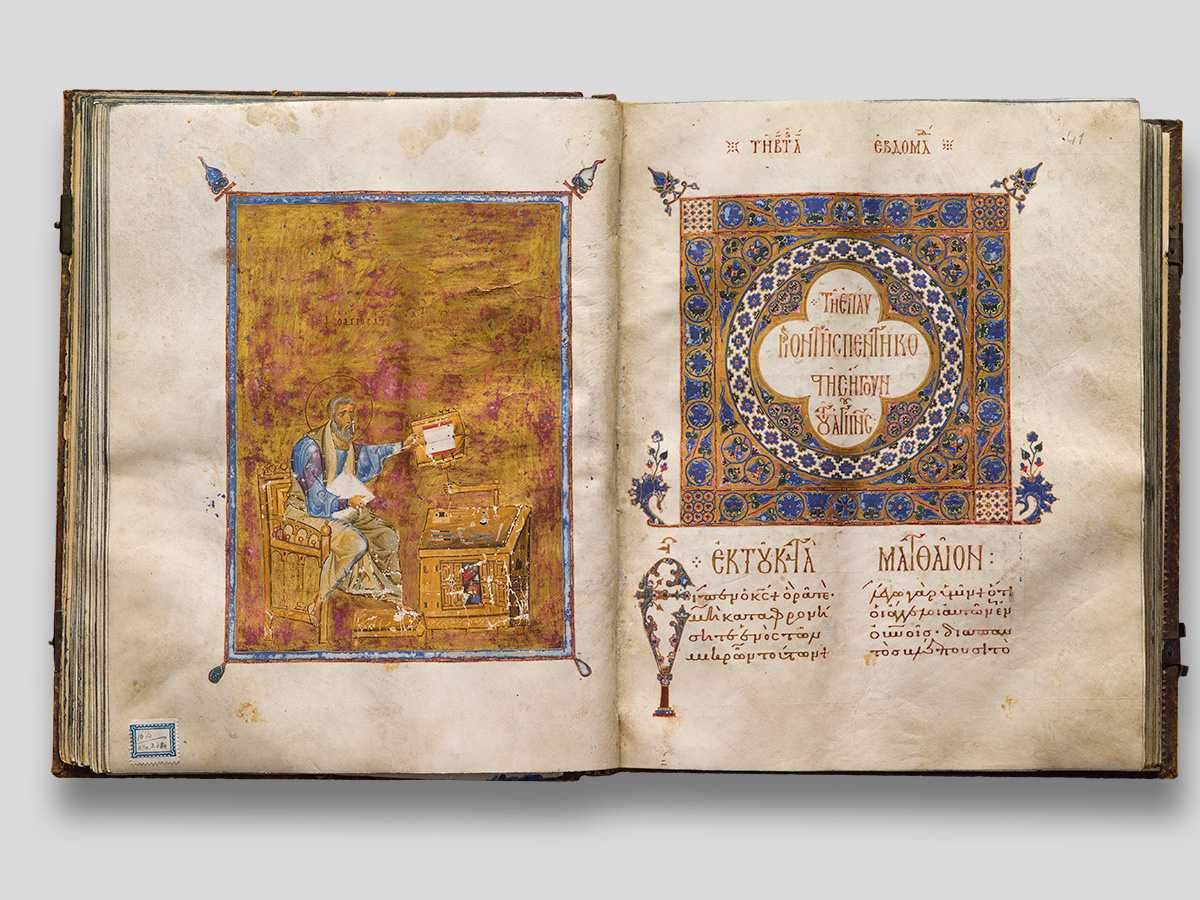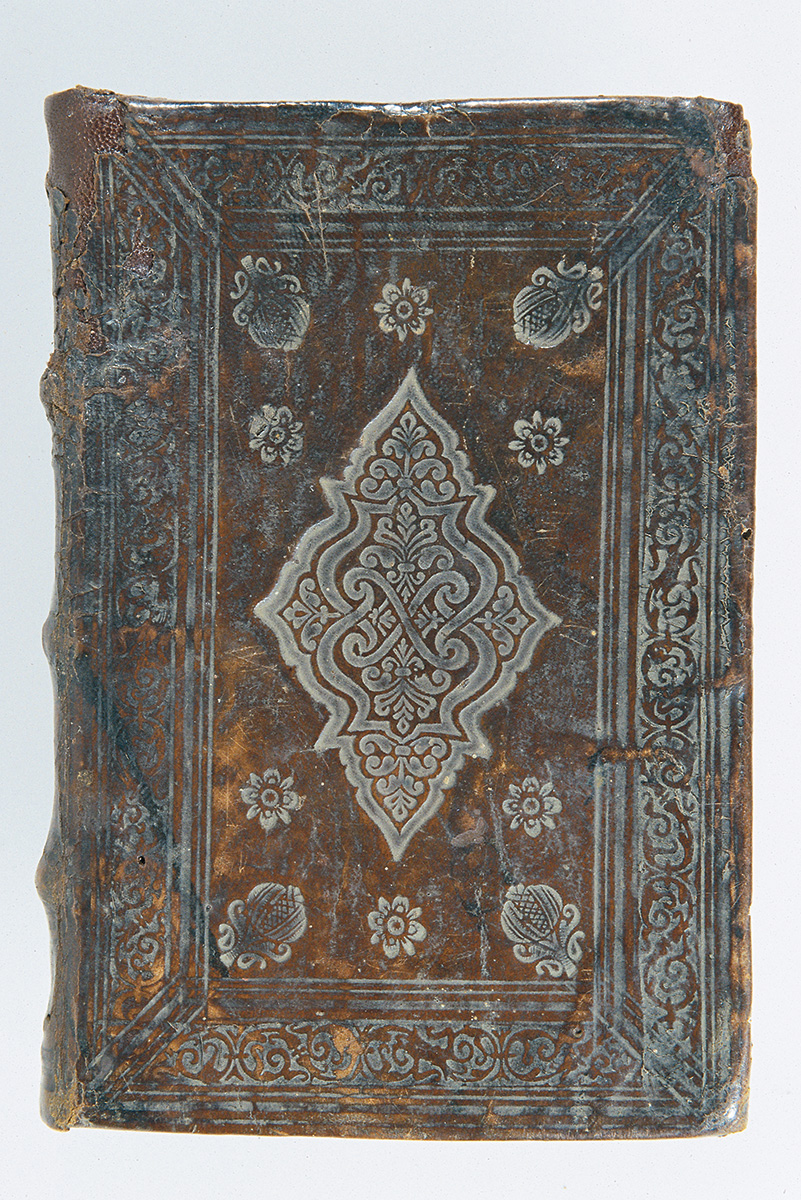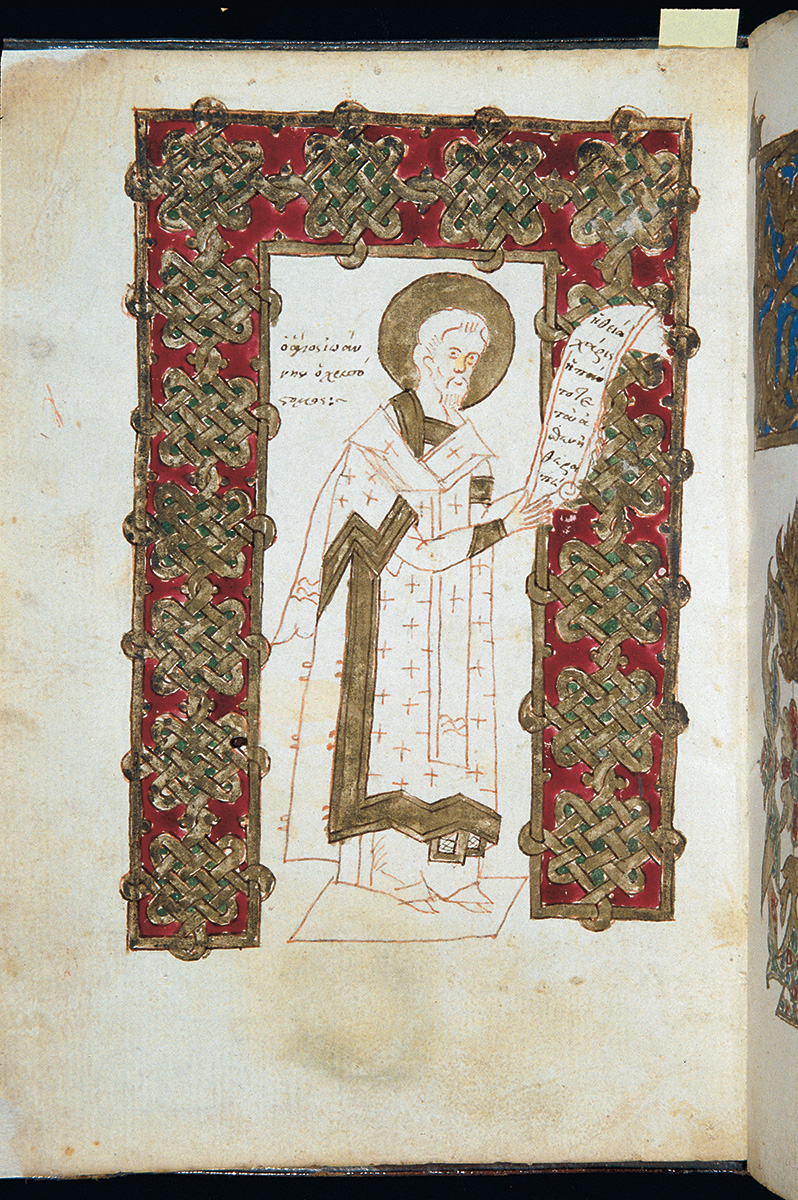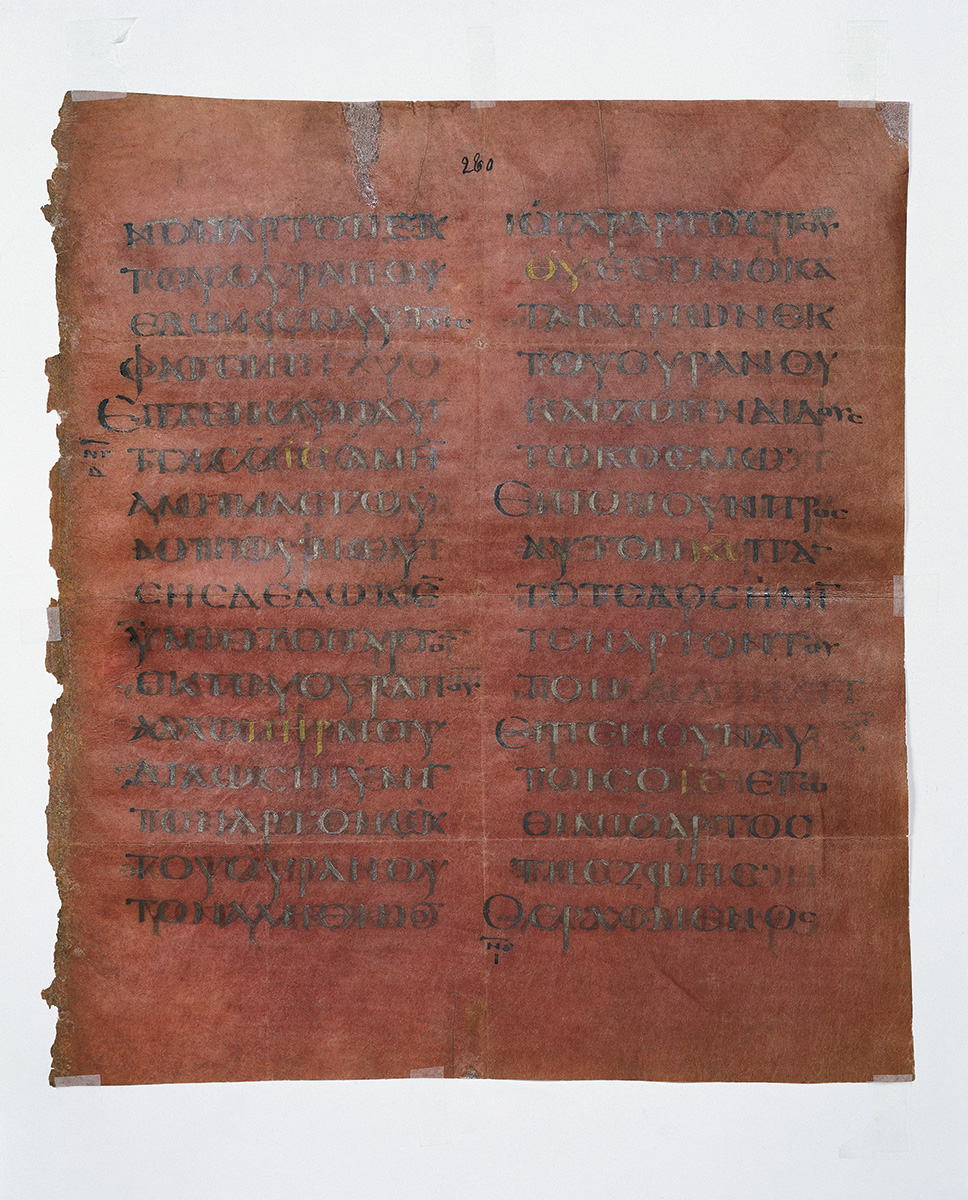Books-Manuscripts
The collection of Greek manuscripts numbers in total twenty-seven (27) artifacts; it is known for several manuscripts in Greek, while it also contains a few foreign artifacts. The manuscripts cover a period from the Early Christian to the Modern periods. The largest group contains codices in parchment, with the Gospel, the most important Christian text. They are distinguished into two categories: first, the Four Gospels, where the text with the Gospel excerpts for Sundays and the significant Holy days is written continuously in two columns and in the series Matthew, Marc, Luke and John; on the other hand, there are the evangelaries, which contain various excerpts. Among them of special importance are the parchment folio in purple dye written in letters of gold and silver, which comes from Sarmousakli of Cappadocia in Asia Minor; and the Four-Gospel with the portraits of the Evangelists-writers. The collection is completed by codices with liturgical books that are necessary for the rites, such as the Liturgies of John Chrysostom, of Basil of Caesarea, the Irmologion, the Octoechos, along with music manuscripts, Menaia containing liturgies and lives of Saints. Regarding the texts of the Old Testament in the collection of the Museum there are manuscripts with the Prophecies and the Psalter used in the rites. The Psalter was often copied and, apart from its theological content, it was popular as a teaching book being widely used as a reader. Moreover, works with instructing and spiritual content are the Homilies of the Church Fathers, the Synaxarion and the Kanonion. Among the more recent works of the collection there are economic registers and a Patriarchal Sigillum. Last, of particular interest are some dispersed sheets from Qur’an and an Ottoman manuscript.






